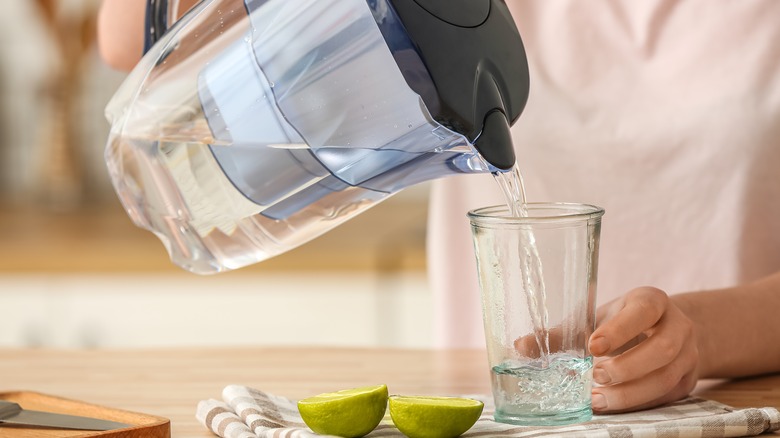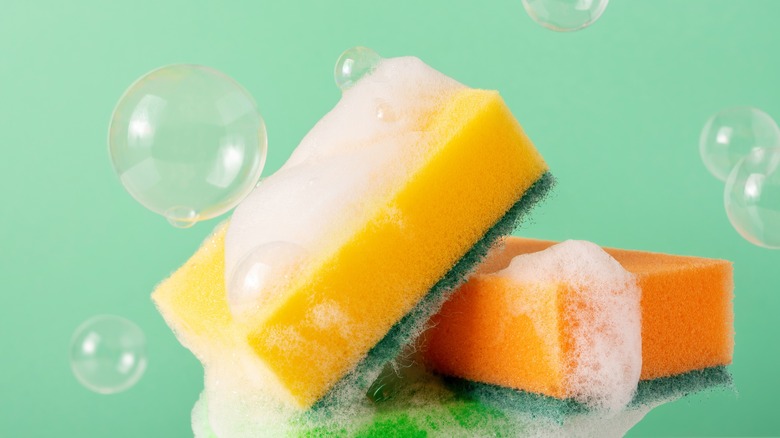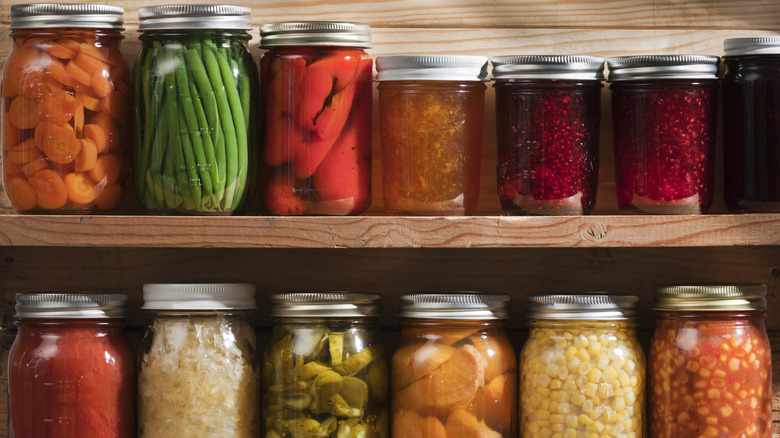How Often To Clean Filter Pitchers For The Best Tasting Water
We hate to break it to you, but you should probably clean your water pitcher. You might assume that a trusty filter will eliminate any unwanted substances from your water, but it can't catch everything. Tinges of pink, green, or black around the edges of the plastic might actually be signs of mold, bacteria, or even algae. Like your water bottle, pitchers need a soapy scrub to keep water tasting fresh and to get rid of any slimy buildup. Luckily, it's easy to get your dispenser back to sparkling clean.
A good practice is to use dish soap and warm water to scrub your pitcher every one to two weeks (and reusable water bottles and cups every day). This gets rid of any bacteria and organisms that might have hitched a ride from the tap or your hands. Once your pitcher is back in tip-top shape, try to remember to wash those digits before handling it to keep germs at bay.
How to keep filter pitchers clean
Don't go overboard when getting out the cleaning products. All you need is dish soap and a sponge; no bleach is necessary. Disassemble the pitcher and clean all its components, but don't worry about scrubbing the filter. All it needs is a quick rinse.
If you notice extra tough stains, or have fallen behind in your dishwashing schedule, try using diluted white vinegar to deep clean mildew from your Brita filter. A 30-minute soak in the vinegar will kill off microbes and restore water to its usual taste. This trick is especially handy for those who keep their pitchers on the counter, as sunlight can trigger algae growth.
Feel free to use warm water when washing, but resist the temptation to refill using hot water. Higher temperatures are harder on your filter because they allow contaminants to dissolve more easily, and can cause more lead to be released from pipes compared to cold water. So, keep an eye on the tap as you refill to maximize your filtration power between weekly washings.
Cooking with filtered water
Once you're flush with clean, great-tasting filtered water, don't just pour it into a glass. Use that H2O in recipes. It may sound obvious, but water that tastes good will yield better-tasting foods and drinks. Make delicious fruit-infused waters, use it to brew coffee, and treat it as a secret weapon for excellent homemade iced tea.
The liquid also serves as a strong base for beans, brines, and breads. Dried beans don't ask for a lot, which means the quality of your water can make a big difference. Depending on where you live, your water might contain more minerals like calcium and magnesium, making your water "hard." Most pitchers can't turn hard water into soft water, but a sink-side purge will help lessen the content, and help yield a softer bean.
Tap water also contains chlorine, which helps kill microorganisms — even the ones you want. Use filtered water when making sourdough to ensure the yeast in your starter thrives. The same goes for pickling, where the liquid also has the benefit of producing a clearer brine. You'll notice the difference in taste from your clean pitcher in the long-soaked preserved veggies, too.



